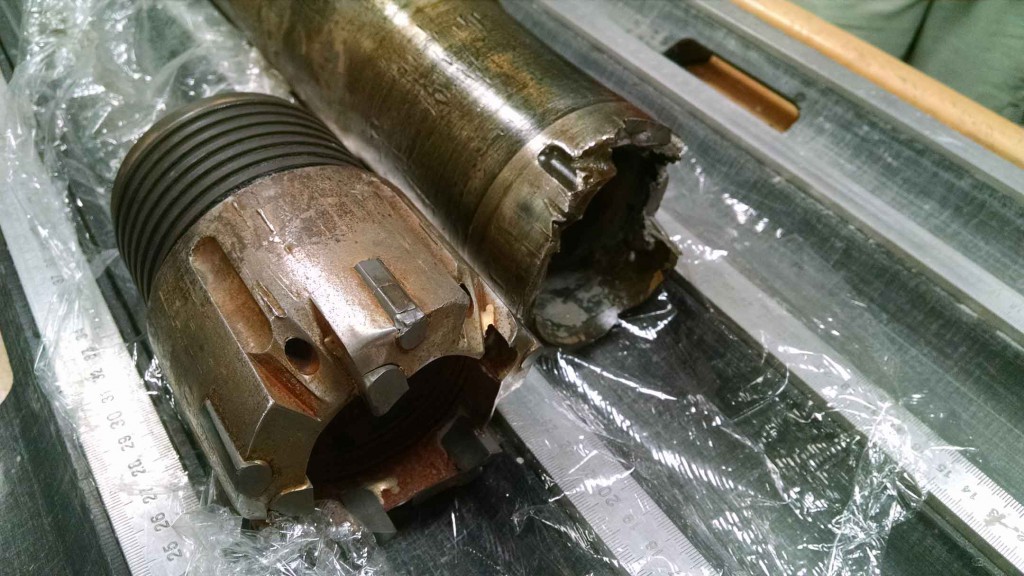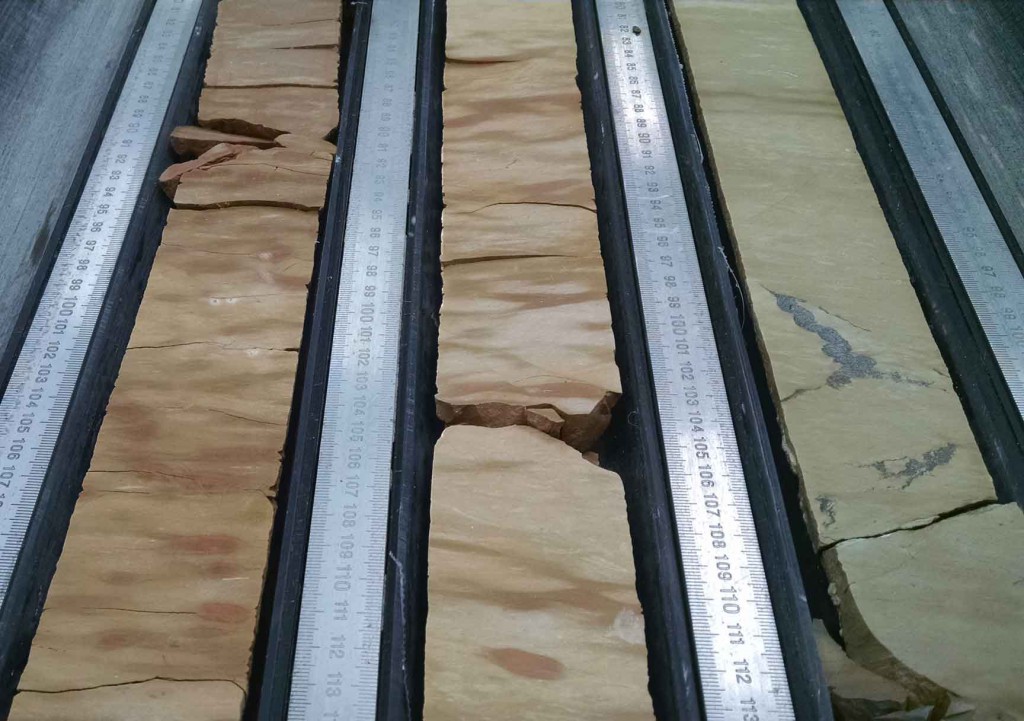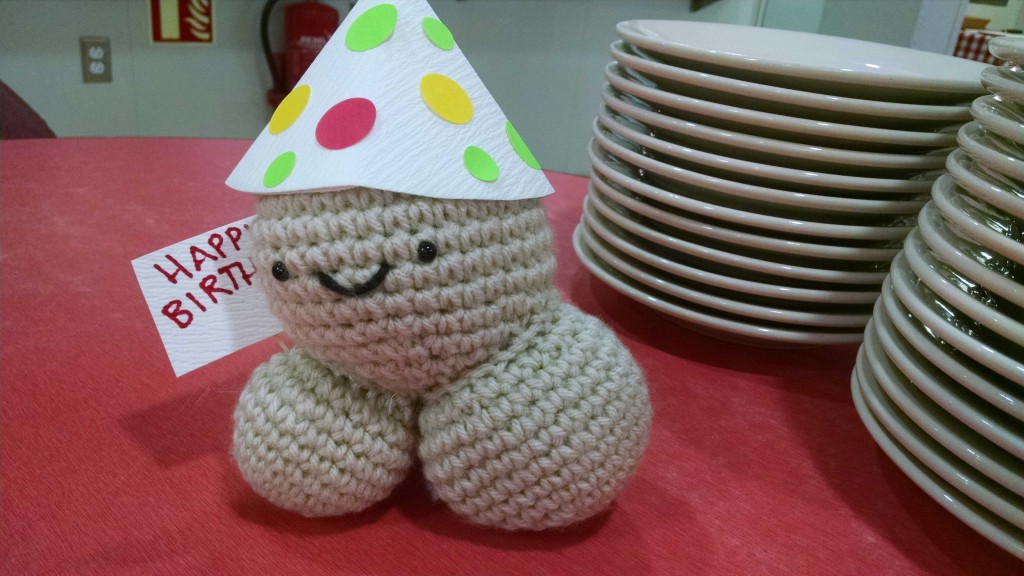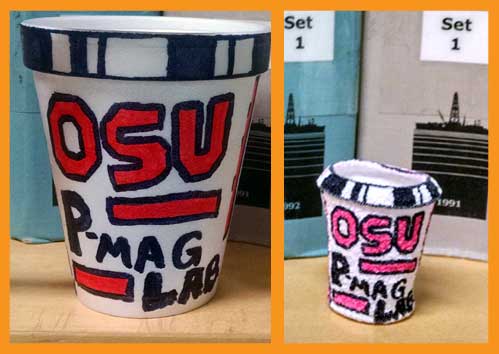After successfully drilling and reaching our target of pre-fan sediments at our deepest site, we are returning to our second site to drill deeper with the RCB system. We hope to extend our record of fan deposition, Himalayan uplift, and evolution of the monsoon at this site to the mid-Miocene–potentially more than 10 million years ago! Team Paleomag continues to work closely with the paleontologists and sedimentologists to figure out where we are in time as the sediments are recovered.
Want to see more of the action? You can check out more photos from the expedition here. Also, be sure to check out the blog of fellow shipboard paleomagnetist, Peter Selkin, here.

Time to switch drilling systems! An XCB drilling bit (left) compared with the remains of an XCB drilling bit (right) used during expedition 354.



